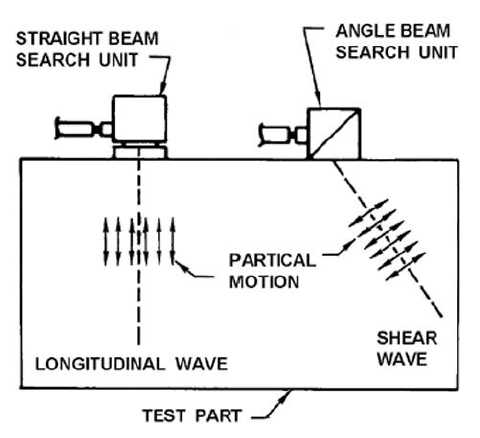T.O. 33B-1-1
5-6
5.1.4
Ultrasonic Vibration Modes.
Sound energy is propagated in a material by the vibration of particles in the material. Ultrasonic energy is transmitted
from one particle to another. The direction in which the particles vibrate in relation to the direction of the ultrasonic
beam propagation is dependent on the mode of vibration.
5.1.4.1
Longitudinal Waves.
Waves in which the particle motion of the material is essentially in the same direction as the wave propagation are
called longitudinal waves. Longitudinal waves are also known as compressional waves or "L" waves (see Figure 5-7).
Longitudinal wave inspections are also called straight beam inspections.
Figure 5-7. Longitudinal and Shear Wave Modes
5.1.4.2
Shear Waves.
Shear waves denote wave motion in which the particle motion is perpendicular to the direction of propagation (see
Figure 5-7). Shear waves travel at approximately one half the speed of longitudinal waves. Shear waves are introduced
into a test part by tilting the search unit to change the incident angle and a portion of the longitudinal wave generated
by the search unit is mode-converted into shear wave at the entry surface. When using the contact method, angle beam
search units are used. This type of search unit consists of a transducer element mounted on a plastic wedge, so that
ultrasonic waves enter the test part at an angle. Shear waves are also known as "S" waves. Air and water will not
support shear waves. Shear wave inspections are also called angle beam inspections.

